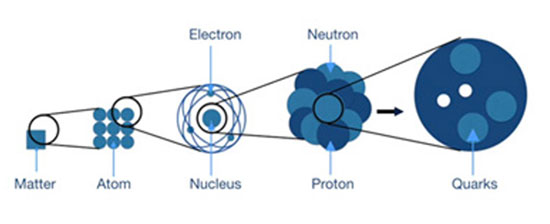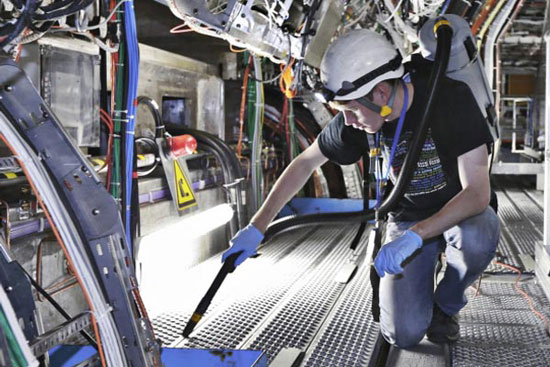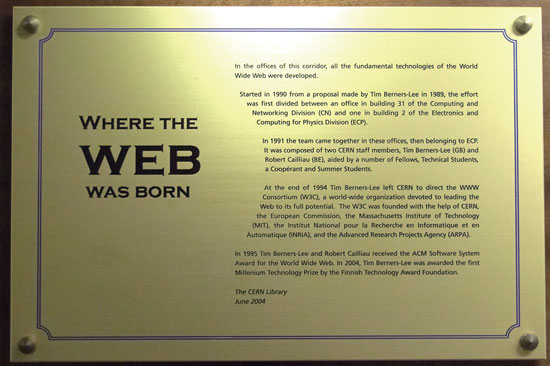It is said that the large industrial exhibitions that moved through European and American cities from the middle of the 19th century onwards were, among other things (or perhaps primarily), the “armed parade of capital,” in its most solid and admirable form—that of fixed capital, of machines, within the societies of the nascent capitalist era. In Paris in 1844; in Berne and Madrid in 1845; in Brussels and Bordeaux in 1847; in Saint Petersburg in 1848; in Lisbon in 1849; and, perhaps the most popular, in London in 1851. And later in 1853 in New York, in 1862 again in London, in 1876 in Philadelphia, in 1889 again in Paris; in 1893 in Chicago…
There is no recorded intention of any of the organizers of these open-to-the-world mechanical and technological exhibitions to terrify the public. Rather, the opposite. The purpose was to display the achievements of human, scientific, and technical thought in such a way as to inspire optimism for the future. There was also another purpose: international technological competition in inventions and their applications. But overall, the atmosphere that the displayed machines—polished and presented like works of art—were meant to exude was one of optimism.
Why was such a display and the pursuit of mass acceptance necessary for the first technological/mechanical wave of capitalism, during the socially and politically turbulent decades of the 19th century? Perhaps because there was also a darker side. These or similar machines would indeed perform exceptionally well—but only by forcing their workers/operators to submit to the rhythms and methods of their operation. For Andrew Ure, for example, who in 1845 published the iconic The Philosophy of Manufactures:
… The great principle of modern industry is, through the union of capital and science, to reduce the work of workers to a simple exercise of vigilance and skill; qualities that can reach a kind of perfection in children…
The awareness that the wonders of science and technology in their application could cause social tensions was a key factor in organizing such exhibitions. Then. And the speculation that even the exhibition of machines would be enough to provoke anger in the crowd made various conservative circles within the then European societies consider such exhibitions dangerous for public order…
In the 20th century, such exhibitions began to play a smaller ideological role, especially from the moment when certain consumer goods of broader appeal (first of all electricity, and later cars, electric irons, washing machines, the telegraph) became tangible on a mass scale. Indeed, making life easier.
Of course, the two world wars, the first with chemical gases and relentless massacres through artillery, and the second with atomic bombs, caused moral shocks regarding where science and technology are heading. Let’s hastily say that these moral questions never disappeared, but they took occasional, “retail” forms; and are partly overcome by shifting the issue to the question of “who?” (“good people?”; “bad people?”) uses the technology. In this sense, atomic bombs in the hands of the Nazis would have been “bad” for humanity; in the hands of the Americans, they were “good”…
This line, starting from the impressive display of machines and, subsequently, the gradual naturalness of their coexistence with humans, would no longer depend, in the phase of the last 30-40 years and the change of capitalist model, on techno-scientific “parades.” Such things naturally occur. However, as also happened during the 2nd and 3rd industrial revolutions, citizens get hold of (or catch sight of) some (very few) of today’s techno-scientific achievements. They also enjoy certain services that the corresponding machines can provide. They are satisfied with this relationship. Rarely do they have, or want to have, a complete overview of the mechanical infrastructure of capitalism—at this historical moment, or yesterday, or tomorrow. Moreover, various persistent “rumors” circulate suggesting that perhaps machines no longer exist, or that they are of secondary importance: capitalism (say these “informed” individuals) has become “intangible.” Perhaps, indeed, due to its dematerialization, it may no longer even be capitalism…

cern
What shocked the planet in 1945, the two bombs in Hiroshima and Nagasaki, which were “good” since the necessary science and related technologies were managed to be utilized by the “good” side (of the winners…), was the starting point of decades of terror. But also the development of physics and auxiliary technologies for related research. On September 29, 1954, twelve Western European countries (Belgium, Denmark, France, Germany, Greece, Italy, Netherlands, Norway, Sweden, Switzerland, England, and Yugoslavia; the latter withdrew in 1961) signed an agreement for the creation of a European organization for nuclear research. From the initials of the French name of the agreement (Conseil Européen pour la Recherche Nucléaire), the then (and current) name emerged: CERN. The organization was not intended to make atomic bombs. But to lead physicists as deeply as possible into the atomic nucleus; giving them the ability to manage it. It was clear that none of the European states, on its own, after the end of WWII, had the resources to proceed far with such research. Even clearer was that the revelation of the “secrets of matter” would be immensely powerful knowledge; regardless of how “good” or “bad” the “good” and “bad” of this (capitalist) world could use it.
Thus was created, evolved, developed and constantly enlarged a giant “microscope”. According to the thousands of scientists and technicians who work there, it is the largest machine in the world and in the history of humanity. The largest machine which, at the same time, no one can see: it is buried. In striking contrast to the “military parades of capital” in the 19th century, the (let’s put it this way) “highest ever mechanical pyramid of capital” is invisible.
The “largest machine in the world” is not hidden, however, for conspiratorial reasons. Only for technical ones: due to the extreme delicacy of the conditions under which it operates, it must not be affected by conditions and phenomena on the Earth’s surface. Magnetic or/and electric fields. However, in turn, these real technical reasons for isolation have a political meaning: the significant spearhead of capitalist physical research concerning elementary particles of matter, called CERN, cannot exist in the “actual” world of the Earth’s surface. It does not happen underground but only symptomatically. In its essence it is otherworldly (or supernatural), even though (it claims) it seeks the “truth of the world”. Practically, this is due to its origin and its original sin: nuclear physics (and atomic bombs).
The interesting thing, however, is that this is not characteristic only of the CERN machine, although it shows it in a way. The “world wide web” (the internet) is also a “machine beyond experience”, although it is used massively. But this second case is a machine of exchanges and surveillance; hence (from a capitalist point of view) the value of its meta-empirical “sociality”. CERN is a machine of different purpose.

Cern produces, in two senses. In the sense of (particle) physics; but also symbolically. On March 30, 2010, Cern’s scientists managed to fire from opposite ends of the tube and accelerate two proton beams that collided with each other. According to the vivid description of one of them, it was as if two sewing needles were launched from the two sides of the Atlantic and collided, tip to tip, somewhere in the middle. Impressive! But for a machine whose total operating cost is just under 1.5 billion euros per year (the expenses are shared by the countries that are partners in the project, according to their GDP), such sleight of hand, even if they involve tremendous techno-scientific work behind them, are not convincing. From time to time, grumbling emerges in various parliaments about how much funding for Cern is wasted money that could be better used elsewhere.
A related report by the OASE, which aimed to assess the value of Cern and justify its economic cost (published in 2014), states among other things:
… Scientists engaged in basic research may not be motivated by the desire to achieve immediate societal benefits. In some cases, the emergence of benefits is a long-term and highly indirect process, such as how advances in understanding [Footnote: certain physical phenomena] can trigger a “scientific crisis” which then evolves into a guide for innovative discoveries. These, in turn, can lead to significant economic consequences many years later. For example, almost a century ago, adopting the atomic theory of matter led to the alarming prediction that the physical world should be unstable, e.g., that electrons in an atom should collapse into the nucleus, causing matter to compress in a time shorter than a second.
Obviously, this approach required revision. Over time, the quantum revolution, which radically modified atomic theory, led to the development of semiconductors, which in turn made all modern electronic applications, computing, and communications possible…. The consequences of progress in high-energy physics [Footnote: another term for particle physics] for society and the economy is a potentially fascinating topic, given the highly internal nature of research in this field and its intriguing connections with other areas of cutting-edge research…

A logical approach when it comes to “fundamental research” and for their machines as well. One of the technoscientists involved in CERN’s experiments reinforces, in his own way, the orientation toward future expectations. In the future… He is, however, somewhat more enlightening:
… It seems that neutrinos may have some properties that could allow them to absorb and transfer data, in some way. This might be similar to radiation beams that can interpret specific types of electronic data. Based on the extensive work we do through supercomputers, we are trying to investigate neutrinos, in order to attempt to understand some of their unique properties.
Again, allow me to remind you, that we are not working with real neutrinos, but with computational electronic models. We work with projections based on theories. Because we have before us the great limits imposed by these extremely small dimensions.
Our calculations are repeated many times, so that they are fully available for review… This work is exciting and interesting to me, and the results of recent research do what science does: they open a series of new doors leading to new rooms of knowledge. The role of neutrinos in our universe is largely unknown, and remains so, even though we already have a small piece of information about some of their theoretical properties…
Neutrino, and not just one kind but three: electronic, muonic, and tau. Additionally, muon, tau, electron: this is a sextet of leptons. Another sextet of quarks: up, down, strange, charm, bottom (or beauty), top. Bosons (2), plus one more, the legendary “Higgs boson.” These are names, they may be “things”; but certainly they are projections of theory: the “standard model.” A theory of physics for the “building blocks of matter,” completed in the mid-’70s—not without problems and gaps. A theory that constitutes an expression of an intense and prolonged scientific anxiety: to explain gravity (that Great Unknown!). And moreover, in such a way that its “analysis” is compatible with the explanations of electromagnetism, weak and strong nuclear forces; so that the “Holy Grail” of scientific authenticity may be conquered: the Unified Theory of Everything…
So here, in the first place, what the “largest machine in the world” is trying to produce: a confirmation that (capitalist) science is capable of explaining Everything. Hence, of conquering it.
The “Everything” must and is being discovered, explained, conquered by “looking microscopically”… This is an old and now permanent conviction of the bourgeois perception of the world: “truth,” whatever that may be, lies in dissecting, slicing apart… “Truth,” whatever that may be, lies in its “components”; then in the “components of its components”; afterwards in the “components of the components of its components.” And so on. It is a self-evident and self-sustaining belief, so strong that all technosciences have been founded upon it; and in their current phase of restructuring1.
The interesting point now is that for most of these subatomic particles, it is difficult for someone who is not a “believer” in the theory (the “standard model”) to assert that they exist—in the standard, logical, usual sense. They “exist,” initially, as theoretical predictions… Subsequently, they exist as electromechanical detections/projections on screens (and this is the main job of CERN, although not solely of this machine; there are other similar, somewhat smaller or less powerful ones) under very strict conditions. Specifically, they appear (these subatomic particles) as representations through electromechanical detectors constructed for this purpose only through collisions between them. Collisions which, in order to occur and “release” other (alleged…) subatomic particles, require enormous amounts of energy: this is generally how particle accelerators work. This is how the Large Hadron Collider works, the backbone of CERN. The machine’s electrical requirements are 1.3 terawatt-hours per year. This is the amount of current needed to power 300,000 households in Greater Europe over the same period. Or 1/10 of the annual electricity production of a nuclear power plant. Hence, particle physics is now also called high-energy physics.

energy, work, knowledge
Such a huge amount of energy to achieve something so “small” from a physical point of view, like the collision of two needles in the middle of the Atlantic? Could this be a great waste? If one looks at the issue from the perspective of energy protestantism, of the “saving” model, that is, it is indeed a waste. But CERN (and every similar particle accelerator) seems to belong to a next paradigm: that of energy emission / targeting; if we can describe it correctly. Here, the “economic” relationship of energy / work, the production, that is, of as much work as possible with as little energy consumption as possible, does not seem to apply: if you want to solve the “mysteries of the universe”, of the universe which seems to be energetically inflationary, you shouldn’t be stingy.
And here unfolds what we understand as the symbolic production of this greater (capitalist) machine of the world. The machines that constituted the “armed procession of capital” in the 19th century were destined to organize, standardize, and increase the produced work; in relation to human labor, and at the expense of its autonomy. The critical historical moment where capital (as a system but also as technoscience) rises a few floors above this necessity—not because it abandons it but because it wants to demonstrate its absolute sovereignty—is 1945: when two nuclear fissions, properly guided, release so much energy that they kill and devastate tens of thousands of people within a time interval dt. From that temporal point, capital and the techno-scientific forces it has mobilized appear simultaneously as masters of work—on earth; and as masters of energy—with the equivalence of a “sun.” This “tremendous energy” does not necessarily have to be used “productively.” It is packaged as a weapon: it can be used destructively. But already the “economy” of the energy/work relationship has escaped the puritanism of the saving of the first. In order to achieve (military) destruction this energy will be unleashed limitlessly!
This relationship, which could be said to be dynamic, is already old if we speak of CERN as the expression of the new paradigm. Because the energy that this machine mainly consumes is not electrical. It is intellectual. Indeed, the several thousand technoscientists involved in the experiments and researches through this machine, from the member states but also from other collaborating ones, constitute what could be called the collective intelligence alienated from capital. Of course, CERN is neither the first nor the only manifestation of this capitalist asset. It is, however, a very representative one. Ultimately, the purpose of the research conducted there is not the construction of some difficult but salvific drug for humanity. It is, only, as little—as much, the search for the Theory of Everything. In other words, the firm (until further notice…) foundation of “truths” that are usable; or that promise they can become so at some point in the future.

The interconnection and concentration of intellectual energy on a global scale does not, of course, happen exclusively or mainly through CERN. It happens via another machine, which emerged from the “CERN environment” and, initially, on its behalf: the World Wide Web, commonly known as the internet. Indeed, since the early 1980s, some CERN technicians began seeking ways to distribute and circulate information from research conducted there among particle physics specialists. By the end of the decade, Tim Berners-Lee and Robert Cailliau initiated the final project named Enquire, which involved the creation of “hypertext.” In late April 1993, it was CERN that announced the World Wide Web was being released for use by anyone.
The birth of the WWW should not be considered incidental, largely random, or unrelated to the CERN machine. Because, we argue, CERN is (beyond what is commonly known) an allegory. The asymmetries in its operation and formal production—for example, “the largest machine in the world dedicated to hunting the smallest particles of matter,” or “massive electrical consumption for accelerating subatomic particles,” or “the concentration of millions of scientific labor-hours to prove or disprove a theory”—can only acquire meaning and, evidently, justification through capitalist criteria.
Capital concentration, both “fixed” and “variable,” energetic concentration and consumption, with uncertain outcomes. But all under the strict capitalist regularity of techno-science and its “development.”
Capital, machinery, imposing, at a “higher level”. And yet so vulnerable. In 2009 a piece of bread fell from the beak of a passing bird, directly into a ventilation system; resulting in a short circuit and shutdown of the electromagnets’ operation. And in April 2016 a rat (real one!), a species that is endemic to the area, ate quite a few cables, forcing the world’s largest machine to go offline for ten days…
Ziggy Stardust

Started in 1990 from a proposal made by Tim Berners-Lee in 1989, the effort was first divided between an office in building 31 of the Computing and Networking Division (CN) and one in building 2 of the Electronics and Computing for Physics Division (ECP).
In 1991 the team came together in these offices, then belonging to ECP. It was composed of two CERN staff members, Tim Berners-Lee (GB) and Robert Cailliau (BE), aided by a number of Fellows, Technical Students, a Cooperant and Summer Students.
At the end o 1994 Tim Berners-Lee left CERN to direct the WWW Consortium (W3C), a world-wide organization devoted to leading the Web to its full potential. The W3C was founded with the help of CERN, the European Commission, the Massachusetts Institute of Technology (MIT), the Institut National pour la Recherche en Informatique et en Automatique (INRIA), and the Advanced Research Projects (ARPA).
In 1995 Tim Berners-Lee and Robert Cailliau received the ACM Software System Award for the World Wide Web. In 2004, Tim Berners-Lee was awarded the first Millenium Technology Prize by the Finnish Technology Award Foundation.
The CERN Library
June 2004
- The “truth of life” was in the “organs.” Then in the “cells.” Then in the “cellular components.” Then in the double helix. Then in some of its segments, in the genes. Then… ↩︎

